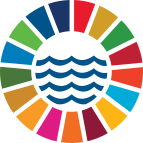Implementation of the National Program for the Conservation of the Brazilian Coastline
(
Government
)
#OceanAction41660
Description
The Ministry of the Environment (MMA) commits to launch and implement the National Program for the Conservation of the Brazilian Coastline (PROCOSTA) to consolidate a program for monitoring, managing and conserving the national coastline in face of anthropic and natural pressures. The Program will address the need for long-term planning involving different sectors and levels of government as well as civil society and the private sector. It also includes actions to adapt to climate change. The Program is composed of four structuring projects:
- The Alt-Bat Project which aims to accurate define the country's coastline and establish a national database for coastal modeling systems. This project is already under way as a result of partnerships between the Brazilian Institute of Geography and Statistics (IBGE); the National Cartography Commission (CONCAR), the Integration Committee of the Vertical Terrestrial and Maritime Components (CICVTM); and the MMA. Other partners include the Brazilian Navy; the Ministry of Mining and Energy (MME) and the Brazilian Geological Survey (CPRM); the Brazilian Army; several Brazilian universities as well as state environmental and/or coastal management agencies.
- The Coastal Hazards Project aims to use modeling software to make projections future scenarios impacts on the coastline at intervals of 5, 10, 25 and 50 years;
- The Coastal Risks and Adaptation Strategies Project aims to create risk identification maps considering socio-environmental and economic aspects followed by an action plan with risk mitigation strategies;
- The Coastline Conservation Management and Monitoring Project aims to establish a continuous coastline monitoring program, including a system of valuation and payment for environmental services provided by preserved coastal ecosystems.
As soon as scenarios are defined for the coastline, data related to the density of human occupation, industrialization, protected areas, natural environments should be inserted. Consequently, risks can be assessed socially, economically and environmentally. In a given time frame, it will be possible to establish the risks and identify opportunities for investments in the safety of populations living in urban areas, helping in the planning and definition of more effective sectoral plans with regards to land use and human occupation. The final result will help define a coastal safety strip and establish a more orderly occupation of the Brazilian coast, focusing on the conservation and preservation of coastal ecosystems, especially dunes, sandbanks, mangroves and coral reefs.
SDGS & Targets
Goal 14
Conserve and sustainably use the oceans, seas and marine resources for sustainable development
14.1
By 2025, prevent and significantly reduce marine pollution of all kinds, in particular from land-based activities, including marine debris and nutrient pollution
14.1.1
(a) Index of coastal eutrophication; and (b) plastic debris density
14.2
By 2020, sustainably manage and protect marine and coastal ecosystems to avoid significant adverse impacts, including by strengthening their resilience, and take action for their restoration in order to achieve healthy and productive oceans
14.2.1
Number of countries using ecosystem-based approaches to managing marine areas
14.3
Minimize and address the impacts of ocean acidification, including through enhanced scientific cooperation at all levels
14.3.1
14.4
By 2020, effectively regulate harvesting and end overfishing, illegal, unreported and unregulated fishing and destructive fishing practices and implement science-based management plans, in order to restore fish stocks in the shortest time feasible, at least to levels that can produce maximum sustainable yield as determined by their biological characteristics
14.4.1
14.5
By 2020, conserve at least 10 per cent of coastal and marine areas, consistent with national and international law and based on the best available scientific information
14.5.1
14.6
By 2020, prohibit certain forms of fisheries subsidies which contribute to overcapacity and overfishing, eliminate subsidies that contribute to illegal, unreported and unregulated fishing and refrain from introducing new such subsidies, recognizing that appropriate and effective special and differential treatment for developing and least developed countries should be an integral part of the World Trade Organization fisheries subsidies negotiation
14.6.1
Degree of implementation of international instruments aiming to combat illegal, unreported and unregulated fishing
14.7
By 2030, increase the economic benefits to Small Island developing States and least developed countries from the sustainable use of marine resources, including through sustainable management of fisheries, aquaculture and tourism
14.7.1
Sustainable fisheries as a proportion of GDP in small island developing States, least developed countries and all countries
14.a
Increase scientific knowledge, develop research capacity and transfer marine technology, taking into account the Intergovernmental Oceanographic Commission Criteria and Guidelines on the Transfer of Marine Technology, in order to improve ocean health and to enhance the contribution of marine biodiversity to the development of developing countries, in particular small island developing States and least developed countries
14.a.1
14.b
Provide access for small-scale artisanal fishers to marine resources and markets
14.b.1
Degree of application of a legal/regulatory/policy/institutional framework which recognizes and protects access rights for small‐scale fisheries
14.c
Enhance the conservation and sustainable use of oceans and their resources by implementing international law as reflected in United Nations Convention on the Law of the Sea, which provides the legal framework for the conservation and sustainable use of oceans and their resources, as recalled in paragraph 158 of "The future we want"
14.c.1
Number of countries making progress in ratifying, accepting and implementing through legal, policy and institutional frameworks, ocean-related instruments that implement international law, as reflected in the United Nations Convention on the Law of the Sea, for the conservation and sustainable use of the oceans and their resources
SDG 14 targets covered
| Name | Description |
|---|---|
| 14.2 | By 2020, sustainably manage and protect marine and coastal ecosystems to avoid significant adverse impacts, including by strengthening their resilience, and take action for their restoration in order to achieve healthy and productive oceans |
| 14.a | Increase scientific knowledge, develop research capacity and transfer marine technology, taking into account the Intergovernmental Oceanographic Commission Criteria and Guidelines on the Transfer of Marine Technology, in order to improve ocean health and to enhance the contribution of marine biodiversity to the development of developing countries, in particular small island developing States and least developed countries |
| 14.c | Enhance the conservation and sustainable use of oceans and their resources by implementing international law as reflected in United Nations Convention on the Law of the Sea, which provides the legal framework for the conservation and sustainable use of oceans and their resources, as recalled in paragraph 158 of "The future we want" |
Deliverables & Timeline
Resources mobilized
Partnership Progress
| Title | Progress Status | Submitted |
|---|---|---|
| Partnership Progress 2018-06-29 | On track |
Feedback
Action Network

Timeline
Entity
SDGs
Geographical coverage
Ocean Basins
Communities of Ocean Action
Website/More information
Countries

Contact Information
Regis Pinto de Lima, Coastal Management, Ministry of the Environment

